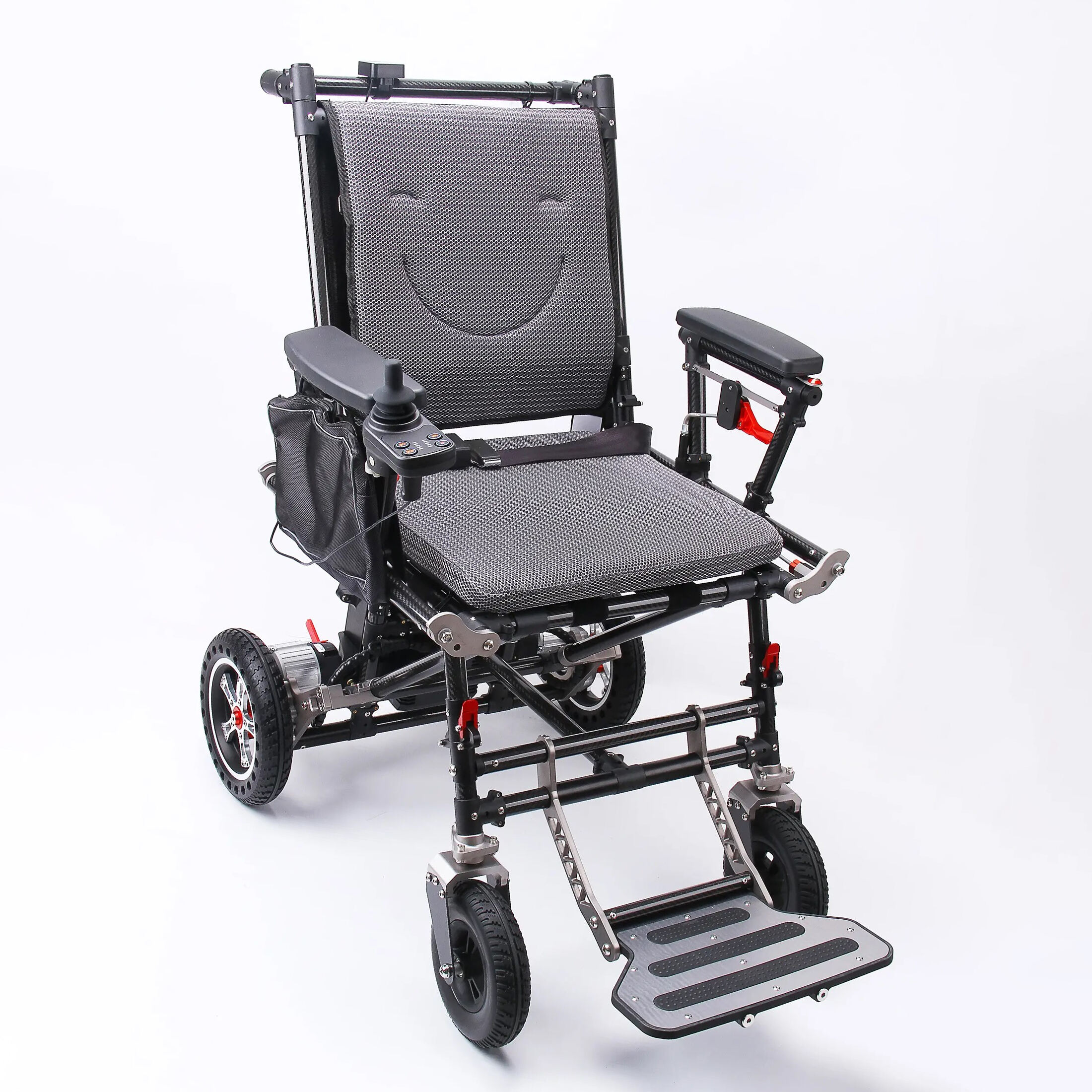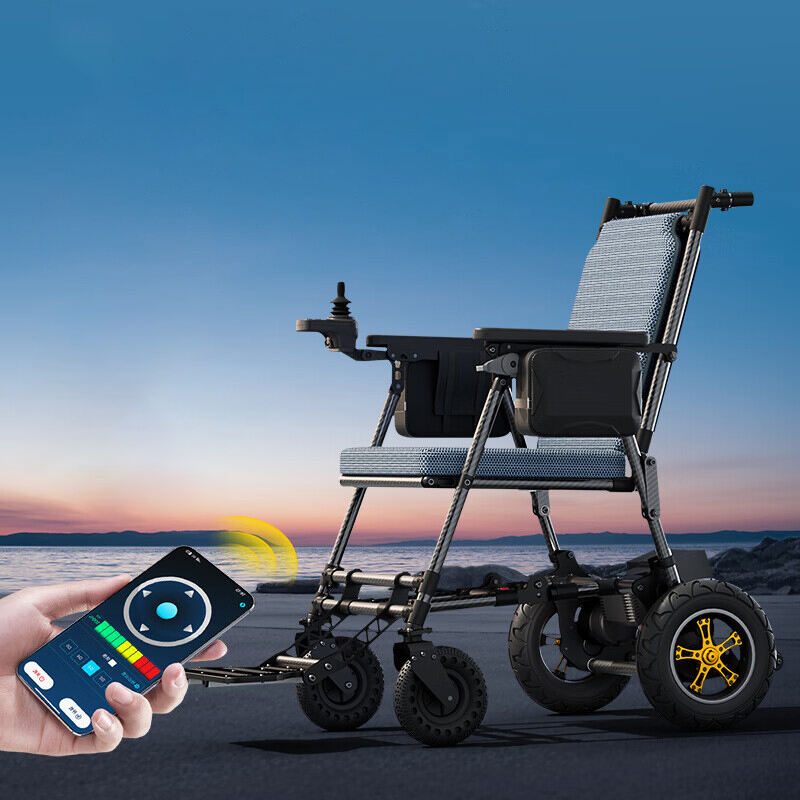In recent years, the mobility aids market has experienced significant growth, with Carbon Fiber Wheelchairs emerging as one of the most sought-after products among global distributors. The demand is largely driven by two key factors: the rising elderly population worldwide and the increasing emphasis on lightweight, durable, and user-friendly medical devices. According to global healthcare research reports, the wheelchair market is expected to expand steadily at a compound annual growth rate (CAGR) of over 7% in the next five years, with Carbon Fiber Wheelchairs taking a substantial share due to their advanced design and material advantages.
Unlike traditional steel or aluminum wheelchairs, Carbon Fiber Wheelchairs provide a balance between strength and weight reduction, enabling users to maintain independence without sacrificing comfort. This balance is critical in developed economies where mobility solutions are tied to improved quality of life, as well as in emerging markets where healthcare infrastructure is rapidly improving. Moreover, global distributors recognize that premium mobility products such as Carbon Fiber Wheelchairs appeal strongly to both private consumers and institutional buyers including rehabilitation centers and hospitals.
Government policies promoting accessibility and rising disposable incomes further fuel the demand. At the same time, distributors are shifting focus from purely functional wheelchairs to advanced designs that integrate ergonomic support and aesthetic appeal. Carbon Fiber Wheelchairs represent the intersection of innovation, health, and lifestyle, making them a preferred choice in the competitive mobility aids market.

The rapid adoption of Carbon Fiber Wheelchairs is strongly linked to their distinctive product features. The first and most recognized advantage is the use of ultra-light carbon fiber material. Compared with traditional steel or aluminum wheelchairs, the weight reduction is significant, often by more than 30–40%. This ultra-light structure makes Carbon Fiber Wheelchairs far easier to push, transport, and maneuver over extended periods, directly improving user satisfaction and caregiver efficiency. For individuals with limited upper body strength, this design is not just a convenience but a necessity.
Another defining characteristic is the high-strength structural performance. While lightweight, carbon fiber offers superior durability, withstanding daily wear and tear better than metal counterparts. Carbon Fiber Wheelchairs are resistant to corrosion, bending, and fatigue, extending their service life. Global distributors value this aspect because it reduces warranty claims and enhances the overall reputation of the product in competitive markets. Hospitals and care centers also prefer products that require less maintenance and deliver consistent long-term reliability.
Equally important is the ergonomic design of seating and back support. Carbon Fiber Wheelchairs often feature carefully contoured seats and adjustable backrests to ensure comfort during prolonged use. This ergonomic advantage not only reduces pressure sores and spinal stress but also enhances posture, a factor increasingly emphasized by rehabilitation professionals. From a distributor’s perspective, ergonomically superior products carry stronger persuasive power when targeting institutional buyers who prioritize patient well-being.
Furthermore, Carbon Fiber Wheelchairs combine practical mobility with modern aesthetics. The sleek design and stylish finish resonate with a younger demographic of users, especially those requiring mobility solutions temporarily due to injury. Distributors highlight this modern appeal when expanding into retail and e-commerce channels, where end-user preferences increasingly influence purchasing decisions.
In summary, Carbon Fiber Wheelchairs offer a unique combination of ultra-light portability, high durability, and ergonomic comfort, setting them apart from conventional models. These features explain why global distributors view them as premium mobility solutions with strong market traction.

As Carbon Fiber Wheelchairs continue to dominate attention in the mobility aids sector, procurement trends reveal how global distributors are reshaping their sourcing strategies. First, there is a clear shift toward high-value, premium-grade products. Distributors are no longer focused solely on price competitiveness; instead, they seek products that combine innovation with long-term durability. Carbon Fiber Wheelchairs, with their lightweight and ergonomic design, meet this demand and position themselves as high-margin products in distributor portfolios.
Secondly, institutional purchasing is on the rise. Rehabilitation centers, hospitals, and eldercare facilities are actively upgrading their equipment, and Carbon Fiber Wheelchairs are increasingly selected due to their reliability and patient-friendly features. Distributors that align with healthcare institutions are seeing growing bulk orders, reinforcing the strategic importance of stocking advanced wheelchairs over traditional models.
Another procurement trend is global supply chain diversification. Distributors are expanding sourcing channels to ensure consistent availability of Carbon Fiber Wheelchairs amid fluctuating raw material markets. Since carbon fiber is a specialized material, supply chain management plays a crucial role in guaranteeing stability and reducing risks of disruption. Distributors also focus on suppliers that can provide compliance with international healthcare and safety standards, ensuring smooth entry into regulated markets in Europe, North America, and Asia-Pacific.
E-commerce and digital platforms are further transforming procurement practices. Many distributors now emphasize direct-to-consumer models, where product differentiation such as lightweight carbon fiber construction and ergonomic seating is heavily promoted online. As consumers increasingly research mobility solutions independently, distributors rely on clear product storytelling and specifications to highlight why Carbon Fiber Wheelchairs outperform traditional options.
Lastly, sustainability is becoming a procurement driver. Carbon Fiber Wheelchairs are often marketed as environmentally friendly alternatives due to their long product life cycle and reduced need for frequent replacement. Distributors view this as a competitive advantage in markets where green procurement policies are gaining traction.
Overall, procurement trends indicate a strong alignment between distributor priorities—quality, compliance, innovation, and sustainability—and the inherent characteristics of Carbon Fiber Wheelchairs. This convergence ensures continued growth in global distribution networks.
To maximize opportunities in the expanding market for Carbon Fiber Wheelchairs, distributors must adopt structured procurement strategies. First, they should focus on strategic partnerships with reliable manufacturers who can guarantee consistent quality and compliance with international standards. Since Carbon Fiber Wheelchairs are positioned as premium mobility solutions, product credibility is critical for sustaining long-term customer trust.
Second, distributors should implement tiered product portfolios. Offering a range of Carbon Fiber Wheelchairs with different weight capacities, seating designs, and price points allows penetration into both institutional and individual markets. This diversification helps balance premium demand with affordability, capturing a wider client base.
Third, investment in after-sales support and training is essential. Since Carbon Fiber Wheelchairs integrate ergonomic and structural innovations, end-users and healthcare providers require guidance on optimal use and maintenance. Distributors that provide training and extended warranty packages differentiate themselves in competitive environments.
Fourth, leveraging data-driven market insights ensures alignment with evolving demand. By tracking demographic shifts, healthcare policies, and consumer feedback, distributors can refine inventory planning and product promotion strategies. Integrating feedback loops into procurement processes helps in adapting quickly to market changes.
Finally, global distributors should align with sustainability-driven procurement practices. Highlighting the long service life and reduced environmental footprint of Carbon Fiber Wheelchairs can strengthen positioning in regions where eco-friendly policies shape purchasing decisions.
By combining reliable sourcing, diversified product offerings, comprehensive service, and sustainability alignment, distributors can fully capitalize on the rising global demand for Carbon Fiber Wheelchairs. This structured approach ensures resilience, competitiveness, and long-term success in the mobility aids market.
 Hot News
Hot News2025-05-15
2025-05-15
2025-05-15
2025-05-15

Copyright © 2025Ningbo Ks Medical Tech Co., Ltd. all rights reserved - Privacy policy